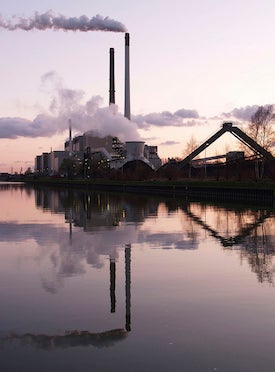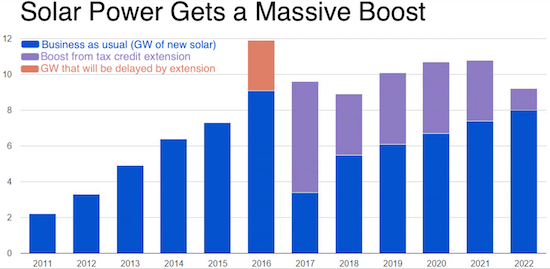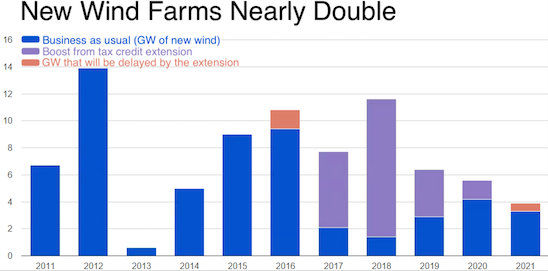This article was published in Scientific American’s former blog network and reflects the views of the author, not necessarily those of Scientific American
This year was a big one for energy. Major shifts in the global oil market and new rules on carbon emissions continued trends toward cleaner electricity and a new normal of low oil prices. Here’s a rundown of the year's biggest energy stories and how they shaped 2015.
Saudi Arabia Depressed the Oil Price to Historic Lows
In late 2014, Saudi Arabia drove the Organization of Petroleum Exporting Countries (OPEC) to hold production steady despite the falling global price of oil — a move that surprised analysts and signaled Saudi Arabia is willing to hemorrhage cash in the short term to undercut U.S. oil firms and maintain its domination of the global oil market. The move caused the oil price to plummet to historic lows of $35–$60 per barrel that persisted throughout 2015. The year of low prices drove many U.S. drillers toward bankruptcy and forced Saudi Arabia to cut spending and increase taxes to cope with a $98 billion deficit.
On supporting science journalism
If you're enjoying this article, consider supporting our award-winning journalism by subscribing. By purchasing a subscription you are helping to ensure the future of impactful stories about the discoveries and ideas shaping our world today.
What drove Saudi Arabia to maintain its level of production to depress the global oil price? Officials there hope they can force U.S. oil firms to curtail production from shale oil wells, which have a higher production cost than conventional Saudi oil wells. And it looks like their strategy might be working. At a conference earlier this month, Amin Nasser, the CEO of Saudi Arabia’s state-owned oil company Saudi Aramco, told reporters “There is no additional unconventional oil coming to the market; actually there is a decline . . . so the supply and demand imbalance in the market will adjust and stabilize . . . and we will be seeing, hopefully, adjustment in the prices going forward starting in 2016.”
Will the Saudis beat U.S. drillers in the global oil game? We’ll find out in 2016.
The United States Established Formal Limits on Carbon Dioxide Emissions

(Source: Wikimedia Commons)
In August, the U.S. Environmental Protection Agency finalized the Clean Power Plan, which limits carbon dioxide emissions from the U.S. electricity sector. To get around the Republican-controlled Congress, which opposes carbon dioxide regulations, the Obama administration established the Clean Power Plan using the existing authority of the Clean Air Act, which Congress passed back in 1970. The limits imposed by the Clean Power Plan will reduce U.S. carbon dioxide emissions by 32 percent from 2005 levels by the year 2030.
While the Clean Power Plan is the law of the land for now, it might not last through 2016. Two dozen states sued the Obama administration over the rule not long after it was formally published in the Federal Register. The courts have widely accepted that carbon dioxide can be regulated as a pollutant under the Clean Air Act, but the precise statutes of the Clean Power Plan might not hold up to scrutiny.
Regardless of whether or not the Clean Power Plan stands up to the legal challenges ahead of it, one thing is clear: it showed the rest of the world that the United States is willing to take significant action to reduce its carbon dioxide emissions.
The World Struck the Most Significant Climate Accord in History

(Source: Flickr user Yann Caradec via Creative Commons)
At the 21st Conference of Parties (COP21) held in Paris in early December, negotiators from nearly 200 countries — including all of the world’s largest emitters — agreed to the most significant climate change accord ever, and the only serious agreement since the 1997 Kyoto Protocol.
What made the Paris agreements significant is that each signatory country established formal emissions reduction targets for the future. While the targets are not legally binding, the agreement does legally require countries to monitor and report on their emissions levels using a universal accounting system. Furthermore, the agreement requires countries to reconvene every five years to report on their progress toward their respective goals.
Will the Paris agreements alone solve climate change? Definitely not. But the world took a major step in the right direction. A framework has been established to report and reduce emissions. What countries achieve with the framework over the coming years will determine whether or not the Paris accords are seen as a success.
The United States Lifted the 40-Year-Old Crude Oil Export Ban and Extended Renewable Energy Tax Credits
In the twilight days of 2015, the U.S. Congress passed a major omnibus spending bill that funds the federal government for a full year (gasp!), establishes a five-year plan to fund and expand U.S. highways, and resolves a number of other funding battles that have languished for years.
The bill includes a major political horse trade that will significantly influence the U.S. energy system in the coming years. It extends tax credits for wind and solar energy for an additional five years — the longest period of certainty for renewable energy developers in over a decade — and lifts the 40-year-old ban on crude oil exports.
The lifting of the crude oil export ban is a victory for proponents of fossil fuels, free markets, and free trade. However, lifting the ban will have little practical impact on U.S. crude oil production or the global oil market, because the U.S. still consumes far more oil than it produces. The figure below compares the net inputs to U.S. refineries (the vast majority of crude oil consumption) to production from U.S. oil fields. With consumption still far greater than production, lifting the crude export ban won't have a major impact. Furthermore, many U.S. oil producers get around the ban by exporting refined petroleum liquids rather than crude oil. The U.S. Energy Information Administration reviewed the impacts of lifting the ban back in September; see this report for the agency’s comprehensive analysis.
While lifting the crude oil export ban is more symbolic than it is meaningful, extending the wind and solar energy tax credits is expected to increase renewable energy investment by $73 billion over the coming years. For this reason, many saw the political horse trade as a net win for clean energy. The figures below show the expected boost in solar and wind energy development from the tax credit extension.

(Source: Bloomberg New Energy Finance)

(Source: Bloomberg New Energy Finance)
What’s Ahead in 2016
In 2016, we’ll see if Saudi Arabia’s move to undercut U.S. oil drillers proves successful, and if lifting the crude oil export ban has any meaningful impact on U.S. oil production. We’ll also see whether or not the Clean Power Plan can stand up to the barrage of legal challenges ahead of it, and if the countries of the world can build on the momentum of the landmark Paris climate change accords. I certainly look forward to the year ahead.
Thanks very much for reading, and have a happy new year!
(Agenda image photo credit: Flickr user State Farm via Creative Commons)